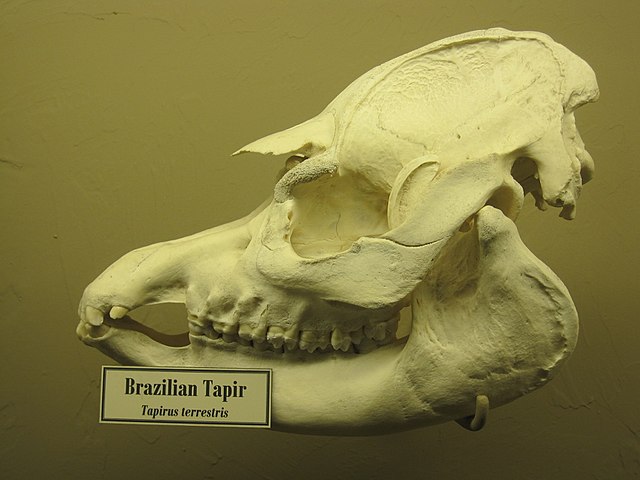The South American tapir, also commonly called the Brazilian tapir, the Amazonian tapir, the maned tapir, the lowland tapir, anta, and la sachavaca, is one of the four recognized species in the tapir family. It is the largest surviving native terrestrial mammal in the Amazon.
South American tapir
South American tapir skull, on display at the Museum of Osteology, Oklahoma City, Oklahoma
A South American tapir browsing leaves at Pouso Alegre, Transpantaneira, Poconé, Mato Grosso, Brazil
A calf of the South American tapir
Tapirs are large, herbivorous mammals belonging to the family Tapiridae. They are similar in shape to a pig, with a short, prehensile nose trunk. Tapirs inhabit jungle and forest regions of South and Central America and Southeast Asia. They are one of three extant branches of Perissodactyla, alongside equines and rhinoceroses. Only a single genus, Tapirus, is currently extant. Tapirs migrated into South America during the Pleistocene epoch from North America after the formation of the Isthmus of Panama as part of the Great American Interchange. Tapirs were formerly present across North America, but became extinct in the region at the end of the Late Pleistocene, around 12,000 years ago.
Tapir showing the flehmen response
Malayan tapir skull
Baird's tapir skull
South American tapir skull







